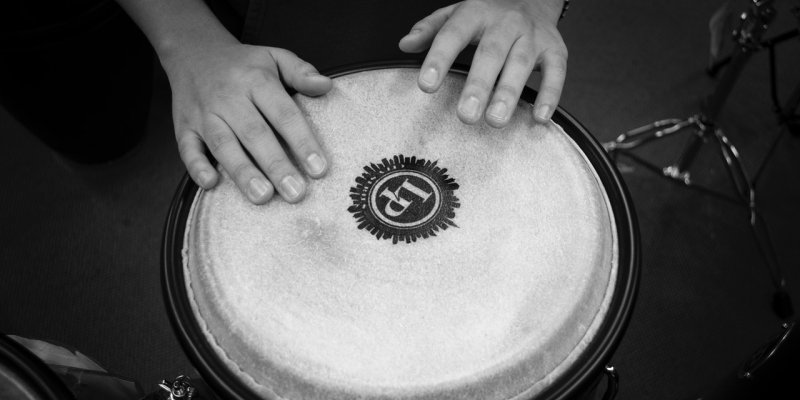
Steady beat is one of the basic concepts that all music is built on. Also known as the pulse, the steady beat is the consistent beat that counts for the quarter note in every measure of each song.
The beat pacing dictates the BPM (beats per minute) and, therefore dictates the tempo of a song. Your beat or pulse will come slowly if your song is very slow.
The steady beat or pulse ticks along quickly in a fast song and is often hard to keep up with without practice.
Related Post: What Is A Click Track And How Does It Relate To Steady Beat?
Many early child development experts say that learning steady beat can also teach kids how to walk, play sports, and learn to speak and read with a smooth cadence, therefore boosting communication skills.
It also plays a part in the receiving end of communication as well.
According to The Journal Of Neuroscience, "People who are better able to move to a beat show more consistent brain responses to speech than those with less rhythm."
Of course, learning the concepts of keeping a steady beat is essential when it comes to learning music and learning how to play an instrument.
While recognizing the steady beat, which again is 99% of the time going to be the quarter-note pulse in each measure of a song, helps you to find the tempo of a song, rhythm is the next step.
It often subdivides that same steady beat in thousands of different ways depending on how the songwriter or composer created the music.
A rhythmic phrase over the course of a steady beat can include quarter notes, half notes, whole notes, eighth notes, rests, and more in a variety of different combinations.
Many people will explain someone as a person that "has rhythm" or doesn't. Most of us learned the concept of a steady beat early on, so we all have a basic concept of a steady beat.
Many people lack the natural ability to subdivide those beats into common rhythmic phrases.
As an example, say you're in a crowd of people at church and clapping your hands to the steady beat.
A person that "has rhythm" or has a natural feel for subdivisions and rhythmic phrases (including notes and rests) will be able to sway and clap on beats 2 and 4 in a four-measure bar, which is a natural, sonically pleasing place to clap in a church setting.
On the other hand, someone who doesn't have as much rhythm would have a hard time swaying on the steady beat and would be inclined to clap on the wrong beats, often beats 1 and 3.
Most steady beat exercises are designed for kids, but don't be ashamed to practice internalizing steady beat concepts as an adult. It may be more challenging to digest as an adult, but that doesn't mean it's impossible for you!
Tap and Clap: Incorporate physical movement into your steady beat practice by tapping or clapping along with songs or metronome beats. Start with a simple, consistent tapping motion on your leg or a surface, synchronizing it with the beat.
Gradually increase the tempo and challenge yourself to maintain a steady and accurate beat. This hands-on approach reinforces the connection between your body and the rhythm.
Use Counting and Mnemonics: Counting beats aloud or using mnemonic devices can help internalize the steady beat.
For example, you can count "1-and-2-and-3-and-4-and" or use phrases like "boom, bop, plow, bow" to represent each beat. Practice counting or reciting these mnemonics while tapping or clapping to reinforce the rhythmic structure.
Play Along with Recorded Music: Choose your favorite songs and play an instrument along with them, focusing on staying in sync with the steady beat.
Whether it's strumming a guitar, playing piano chords, or drumming on a practice pad, actively engage with the music and strive to match your rhythm to the existing beat. This exercise enhances your sense of timing and helps you develop a strong internal pulse.
Explore Different Genres and Styles: Experiment with diverse musical genres and styles to expose yourself to various rhythmic patterns. Steady beat exists in different forms across genres such as rock, jazz, hip-hop, and classical music.
By immersing yourself in different rhythmic contexts, you'll expand your understanding and adaptability to different tempos and beats.
Collaborate with Others: Engaging in group music-making activities is an excellent way to develop a sense of steady beat. Join a band, ensemble, or music community where you can play with other musicians.
Collaborating with others encourages synchronization and challenges you to maintain a consistent beat while interacting with different instrumentalists. It also provides valuable opportunities for feedback and growth.
Remember, steady beat is a foundational element of music, and consistent practice is key to internalizing and mastering it.
Embrace the joy of making music and explore creative ways to incorporate rhythmic exercises into your musical routine.

As a session singer, writer, and producer that has worked with over 300 clients to provide high-quality jingles, singles, and features, Yona spends her time creating and marketing new music and helpful resources for creators. Check out Yona’s latest releases on her Spotify, her Youtube and share if you like it!
If you are in need of singer, songwriter or song producer services, see what Yona Marie can offer you on her services page.